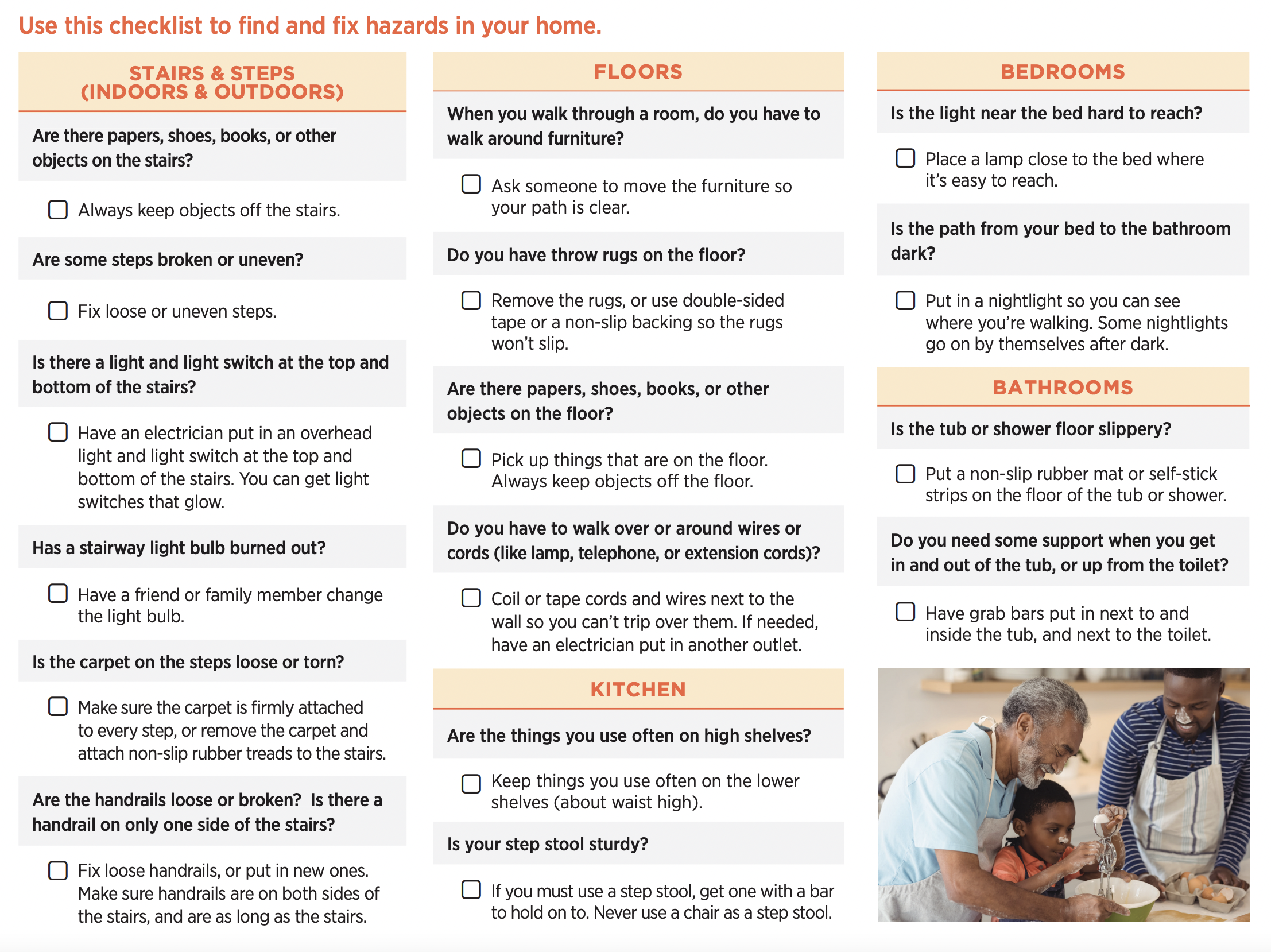The Best Guide To Dementia Fall Risk
Wiki Article
The Single Strategy To Use For Dementia Fall Risk
Table of ContentsThe 20-Second Trick For Dementia Fall RiskThe Buzz on Dementia Fall RiskNot known Incorrect Statements About Dementia Fall Risk Facts About Dementia Fall Risk Uncovered4 Simple Techniques For Dementia Fall Risk
In the community, insufficient road illumination or unprotected creeks and land fills may likewise cause accidents. Falls Risk Analysis Tool (FRAT) is a 4-item falls-risk screening tool for sub-acute and household care. The FRAT has three sections: fall danger standing, threat element checklist, and activity plan. A Loss Risk Standing includes data regarding history of current drops, medications, psychological and cognitive condition of the person.If the patient ratings on a threat variable, the equivalent number of factors are counted to the client's autumn risk score in the box to the much. If a patient's fall danger score totals 5 or higher, the person goes to high threat for drops. If the individual scores just four points or reduced, they are still at some risk of dropping, and the registered nurse should use their best professional analysis to take care of all autumn danger factors as part of a holistic treatment plan.
These standard strategies, in general, help establish a safe setting that lowers accidental drops and defines core preventative actions for all clients. Indicators are important for people at threat for drops.
The Main Principles Of Dementia Fall Risk
Wristbands must consist of the person's last and first name, day of birth, and NHS number in the UK. Only red color must be utilized to indicate special client condition.
Things that are too much may call for the client to reach out or ambulate needlessly and can possibly be a threat or add to drops. Aids prevent the client from going out of bed with no assistance. Nurses reply to fallers' telephone call lights faster than they do to lights launched by non-fallers.
Visual problems can significantly cause drops. Keeping the beds closer to the floor decreases the risk of falls and severe injury. Positioning the mattress on the flooring substantially decreases autumn threat in some healthcare setups.
The smart Trick of Dementia Fall Risk That Nobody is Discussing
Clients who are high and with weak leg muscles that attempt to sit on the bed from a standing setting are most likely to fall onto the bed because it's also reduced for them to lower themselves safely. Likewise, if a tall person efforts to get up from a low bed without help, the individual is most likely to fall back down onto the bed or miss the bed and fall onto Get More Info the flooring.They're created to advertise prompt rescue, not to prevent drops from bed. Aside from bed alarms, enhanced guidance for high-risk clients likewise might aid stop drops.

Patients with an evasion gait boost fall opportunities dramatically. To decrease fall danger, footwear should be with a little to no heel, thin soles with slip-resistant walk, and support the ankles.
The Only Guide to Dementia Fall Risk
In a research, homes with sufficient illumination report fewer falls (Ramulu et al., 2021). Enhancement in illumination at home might minimize loss prices in older grownups.
Caretakers are effective for assuring a protected, secured, and safe environment. Researches demonstrated really low-certainty proof that caretakers lower loss risk in intense treatment medical facilities and only moderate-certainty that alternatives like video clip surveillance can minimize sitter usage without boosting fall risk, suggesting that sitters are not as beneficial as at first thought (Greely et al., 2020).
you could try these out
The Buzz on Dementia Fall Risk

Enhanced physical fitness reduces the risk for drops and limits injury that is received when fall transpires. Land and water-based exercise programs might be in a similar way beneficial on equilibrium and stride and thus reduce the danger for falls. Water exercise may add a favorable benefit on balance and stride for ladies 65 years and older.
Chair Rise Workout is a straightforward sit-to-stand workout that aids reinforce the muscles in the thighs and buttocks and enhances wheelchair and freedom. The objective is to do Chair Rise exercises without using hands as the client becomes stronger. See sources section for an in-depth instruction on just how to carry out Chair Increase workout.
Report this wiki page